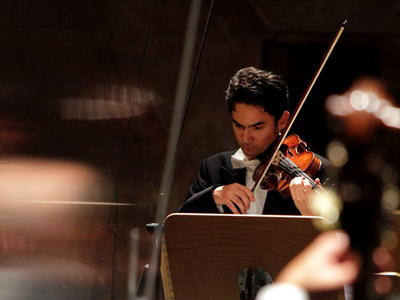
By ANDREW POWELL
Published: December 13, 2014
MUNICH — Passive accompanist and intent visionary: Gianandrea Noseda managed to be both Nov. 18 in his debut program with the busy Bavarian State Orchestra. For Dvořák’s Violin Concerto (1879) he indulged David Schultheiß in a lyrical reading that generally took its time, ignoring chances in the outer movements to drive rhythms more forcefully. The soloist (and first concertmaster) worked without ostentation. He phrased exquisitely, made the countless dances dance, and clearly relished the supply of melody, presenting the work as a confident if mostly tranquil whole. Fine woodwind contributions brightened the proceedings.
Rachmaninoff’s Second Symphony (1907) followed the break at this Akademiekonzert in the orchestra’s ornate crimson home, the National Theater. Now Noseda was in his element, revealing obvious enthusiasm and instinct for the music. Conducting from a pocket-book score, he made these opera musicians sound as if they played Rachmaninoff every week, quashing notions that their mixed schedule prevents adequate rehearsal for concerts. He found ideal balances between the strings and winds, apparently with ease. He allowed partial themes to fall naturally in place, climaxes to build themselves, and unity to emerge through gentle emphasis on material shared between the movements. He injected little dashes of suspense, pounced on and relished each accelerando. But he never overplayed his hand. It was a richly executed performance, urgent in the second movement, duly rapturous in the Adagio, and nowhere identifiable as the interpretation of a non-Russian.
Photo © Wilfried Hösl
Related posts:
Horn Trios in Church
Benjamin and Aimard
Concert Hall Design Chosen
Thielemann’s Rosenkavalier
Kaufmann, Wife Separate
Tags: Bavarian State Orchestra, Bayerisches Staatsorchester, David Schultheiß, Gianandrea Noseda, München, Munich, National Theater, Nationaltheater, Rachmaninoff, Review